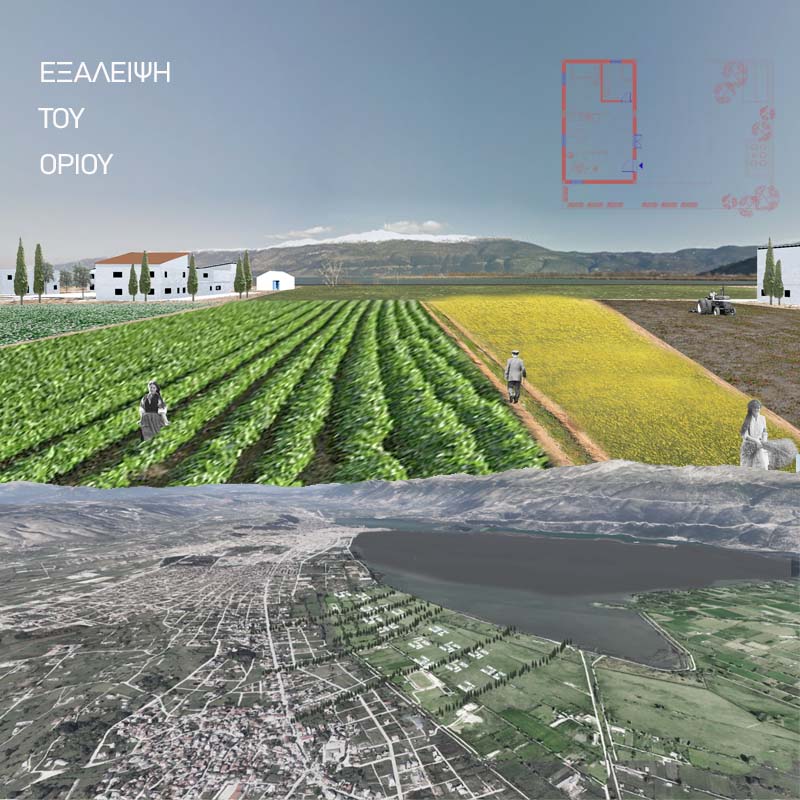

The thesis is a proposal for an agrarian settlement focusing on social housing.The project occupies an undeveloped rural area near the lake Pamvotida in Ioannina city, with an uknown future use due to legal delays.
The settlement seeks to propose a low-cost housing model, with opportunities to expand it through the participation of the residents in the construction process. At the same time, it seeks to be an extension of the existing city in full connection with the pre-existing rural landscape, which is properly utilized to nourish, mobilize and unite.
The housing is organized in neighborhoods, where we meet the initially ground-floor houses, while two different typologies are proposed for both of them. The typologies of the houses, the construction materials, the possibility of modification or expansion, the individual/common ownership of arable land, are all parts of a mechanism that works for personal mobilization and expression, which aims at the practical claim of space and opportunities.
Through the proposal, the importance of cooperation between the residents of the new settlement as well as those with the locals who live nearby is referred, making it clear that cooperation outweighs any social difference that could stand in the way of the higher purpose of the proposal.
In addition to those above mentioned, in order for participatory practices to be managed, a building cooperative center is proposed, while additional public uses added to the program provide health, education, sports and trade services.
The goal is for the built to be included in the natural lansdcape and vice versa.
For the limits between old and new shall be eliminated.
Supervisors: Micocci Fabiano, Phokaides Petros
Reference Number: 1078


The "Platform for Culture in Volos", located on the coastal front of Volos, behind the church of Agios Konstantinos, is a multifunctional complex offering a variety of uses and activities.
The architectural proposal consists of two large ramps leading to two elevated flat roofs. A third volume is added between the two ramps, while two galleries are created as intermediate spaces. All the volumes are perpendicular to the sea and parallel to each other.
It houses a 300-person, 500-square-meter hall suitable for concerts, theater performances, audiovisual projections, lectures and, above all, conferences.The multi-purpose hall also hosts a 600 m2 exhibition space with changing themes, offering visitors the opportunity to come into contact with a variety of cultural exhibits. It also has a 350 m2 restaurant-cafeteria, which can accommodate 80 people, and a 200 m2 "reading room" with a branch of the municipal library, where 50 visitors can relax, read or work.
But perhaps the most important use of the multi-purpose hall is to provide quality public space on the seafront. The complex features 1200 sqm elevated dormers accessible by ramps, which create large plazas at height with panoramic views of the Pagasetic Gulf. These dormers are an ideal space for relaxation, walks and social gatherings.
The main construction materials of the multi-purpose building are masonry with Skyros limestone and cement. The choice of materials was based on the building's integration into the environment and durability over time.
Overall, the aim is for the multi-purpose hall on the coastal front of Volos to become an important cultural and social landmark for the city. To offer citizens and visitors a variety of uses and activities in a modern and functional environment both indoors and outdoors, providing additional quality public space.
Supervisor: Manolidis Kostas
Reference Number: 1074
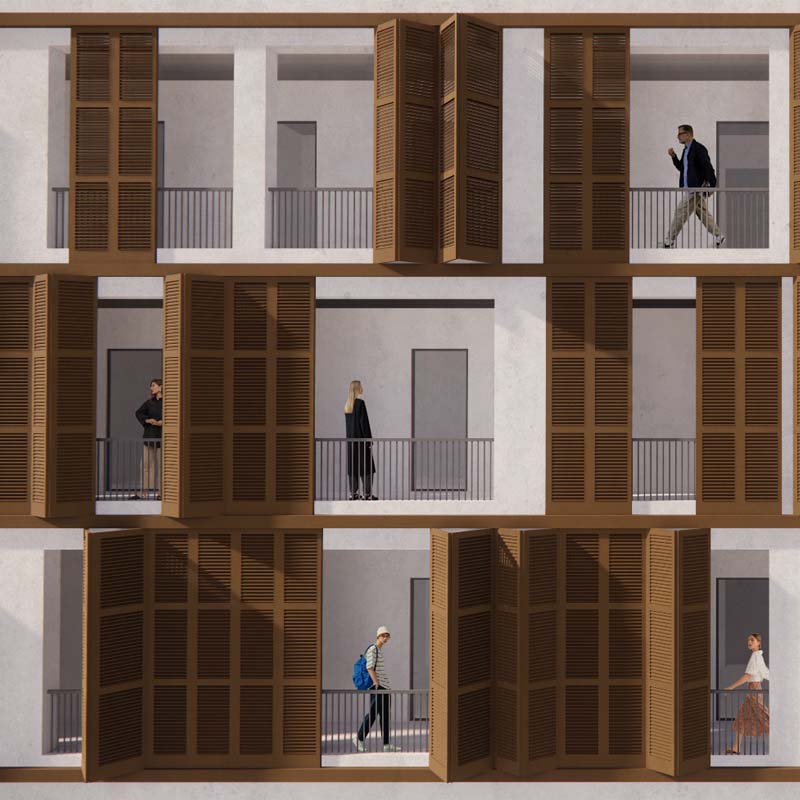

The study of the diploma thesis entitled " Redefining the shells-Conversion of an industrial building into a homeless accommodation center" by students Dionysia Astli and Jovahnna – Ioanna Giannopoulou and supervising professor Mr. Fabiano Micocci focuses on one of the most sensitive and important problems of our time – the homelessness. It is not an unprecedented phenomenon of today's time, on the contrary, it is a timeless situation that was observed in various places and periods of time, from ancient times until today. Unfortunately, society is unable to find a solution to the problem. As a result, it swells continuously. In Greece, the largest number of homeless people are found mainly in the large urban centers of the country, such as Athens, Thessaloniki and Volos, and today, through surveys that have been carried out, more than 1600 people have been recorded living on the streets, of which most are gathered in the capital.
The reasons that lead to homelessness can be multidimensional and different from person to person. For this reason, it is crucial to develop personalized models that treat each person as unique – an understanding that is also necessary for the way we approach the effects of homelessness.
The idea of the thesis proposes the creation of a new structure for the temporary accommodation of homeless people, which will provide them with the appropriate support so that they can be helped, work and gradually become fully independent and integrate smoothly into the wider society.
For the creation of the new multi-purpose building, the former industrial building specifically in the area of Nea Ionia, where it operated as a textile factory, was used. Moreover, the park in front of the building was redesigned in order to raise awareness and awaken ecological consciousness and create agricultural jobs, so that the guests can work and at the same time contribute to the structure.
The guests of the center will work in the pergolas of the program in which they will grow vegetables, fruits and herbs and will have the possibility of selling them in the public market that will be set up in the square of the complex.
Keywords: homelessness, homeless shelter, industrial building, reuse, park.
Supervisor: Micocci Fabiano
Reference Number: 1083
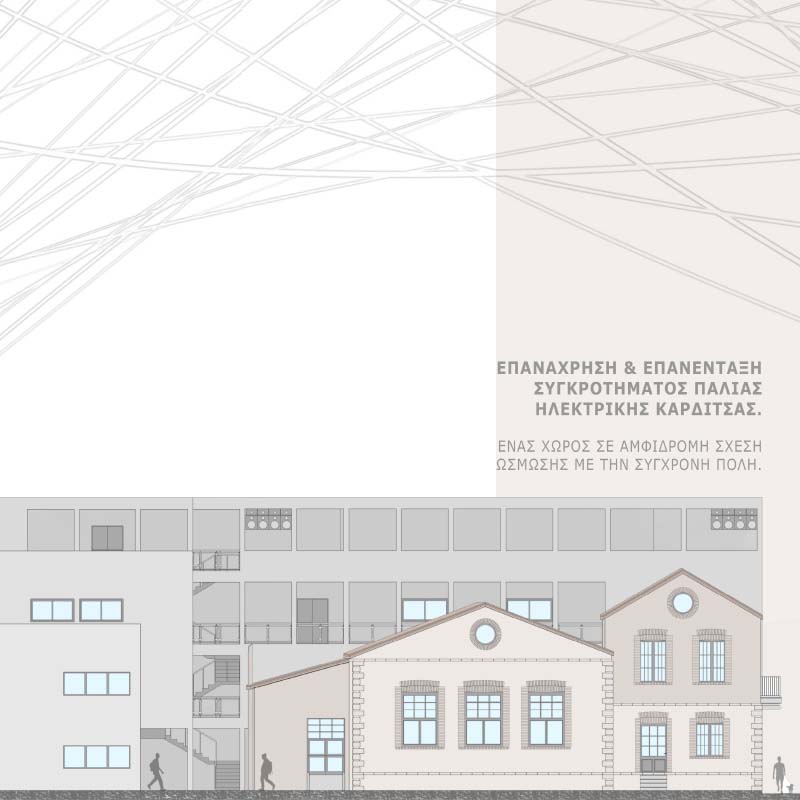

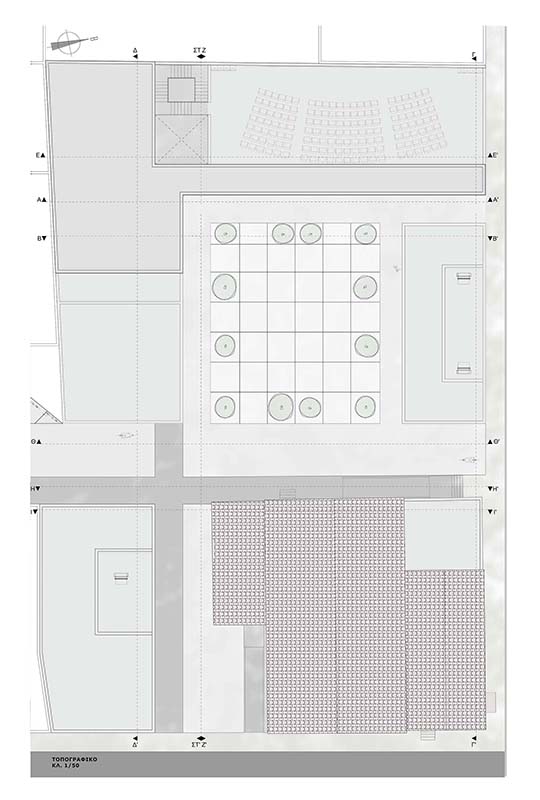

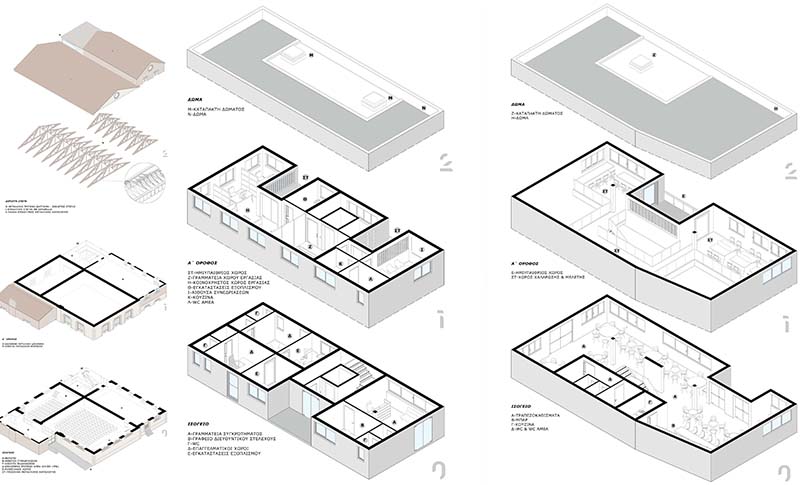

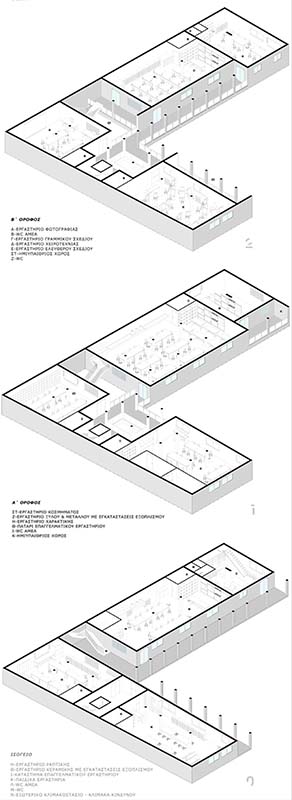

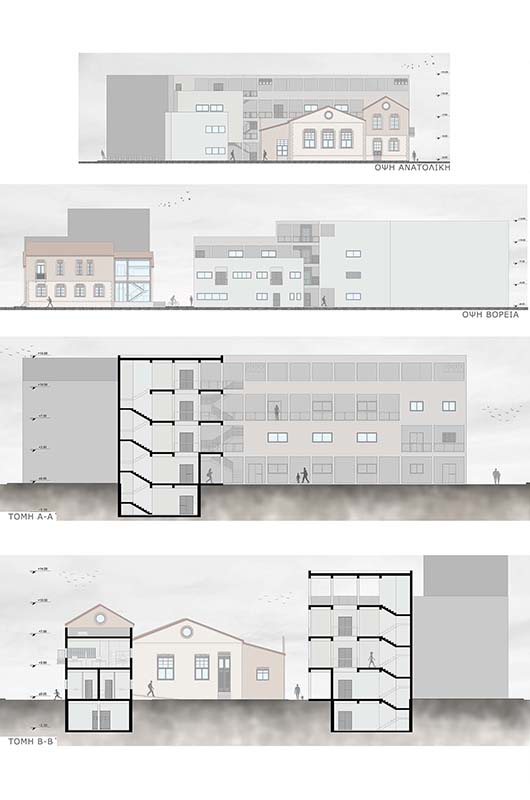

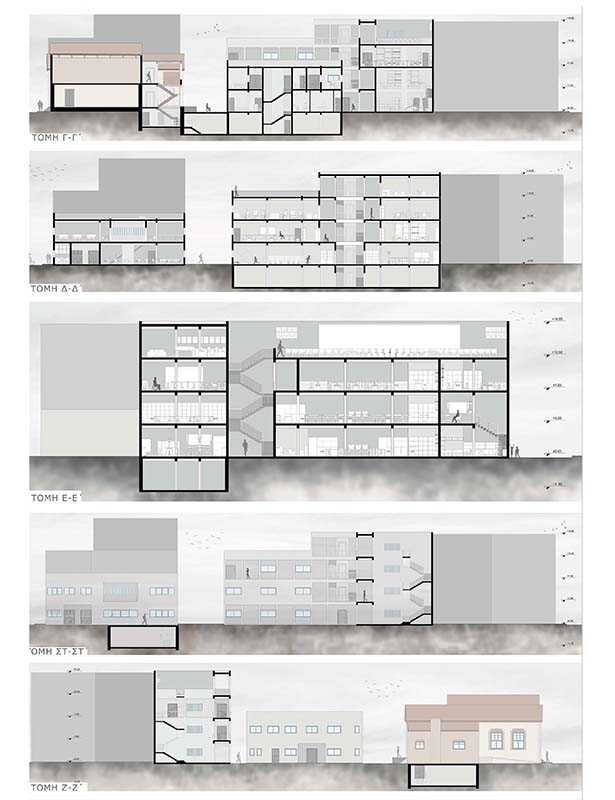

The abandonment of old industrial buildings, now scattered throughout the urban fabric of cities, is a phenomenon we notice all around us. It is evident that these structures possess the potential for transformation to serve the needs of modern cities, provided that the most suitable new use is selected. Their repurposing is a demanding and highly interesting endeavor and poses a unique and multi-layered design challenge.
My interest in industrial buildings and their repurposing drove me to engage in both my research and thesis work, the latter being based on the findings of the former. The complex of the "Old Electric Plant of Karditsa" stands as an exceptional example of industrial heritage and cultural identity for the city. The architectural and historical significance of the complex, its position within the contemporary urban fabric, and the public's desire for its reintegration, make the issue of its repurposing a significant topic.
Within the scope of this thesis, the repurposing and reintegration of the Old Electric Plant complex as a Cultural Center is proposed. The removal of the neighboring existing building allows for the incorporation of additional functions into the proposed architectural program. The program aims to create more public facilities and ultimately a new space in a mutually beneficial relationship of assimilation with the modern city. The final design at both architectural and developmental levels will have positive impacts on the utilization and protection of the industrial complex as well as on the developmental prospects of the city.
Supervisor: Trova Vasso
Reference Number: 1050
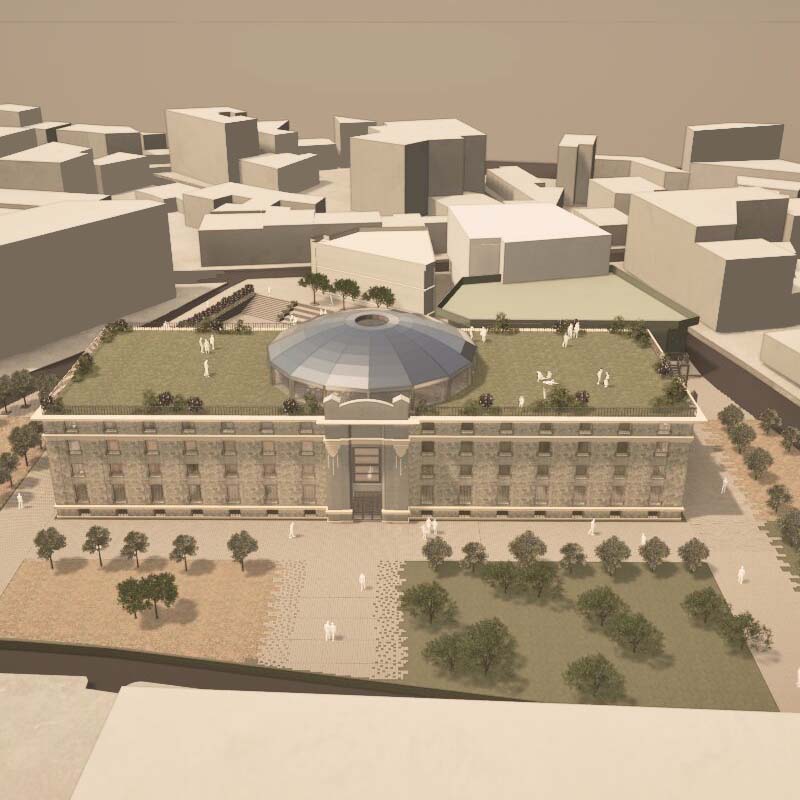

The area we have chosen to focus on is the city of Agrinio, which until a few years ago was directly linked to tobacco production, influencing the daily lives of its inhabitants. Although in the 19th century tobacco cultivation was at its peak, today this connection has been lost, a fact that has cost the region dearly. Many times, citizens and local authorities have expressed the need to preserve and highlight this historical heritage. In this context, we thought of proceeding with the creation of a tobacco museum within the city of Agrinio, which would offer the visitor a comprehensive and immersive experience, describing in detail — through the exhibits — the different stages of tobacco production and processing. To house our proposal, we considered the reuse of one of the buildings that were used as tobacco warehouses, which are no longer utilized, are in poor condition due to lack of maintenance, and are directly linked to the historical heritage of Agrinio. We settled on the Papapetrou Tobacco Warehouses, a building that is in a good location, near the city center on Mavili and Kostis Palamas streets, and presents architectural interest. It is an emblematic building that, however, has been left vulnerable to weather conditions without being used. Due to its size, it offers the possibility to accommodate other cultural spaces and infrastructures that the city lacks.
Additionally, in Agrinio, the issue of the absence of an adequate library is currently being raised, as the existing one is not enough to meet the needs of the residents, as well as the lack of public and free cultural spaces.
In the first chapter of this project, we will deal with the historical analysis of the city of Agrinio and its close relationship with tobacco cultivation, from the "golden age" of tobacco in the 19th century to its cessation after the German occupation. Furthermore, the stages of tobacco cultivation and processing will be briefly analyzed, from the stage of sowing to the production of cigarettes in modern factories. Finally, a brief study of the architecture of the tobacco warehouses, buildings used for the storage and processing of tobacco products, will be conducted.
In the second chapter, we will describe and analyze in detail the current condition of the Papapetrou Tobacco Warehouses, emphasizing its history as well as its technical description.
In the third chapter, we present our proposal for the restoration and reuse of the Papapetrou Tobacco Warehouses with the aim of creating a Tobacco Museum and Cultural Center in the city.
Supervisor: Manolidis Kostas
Reference Number: 1087
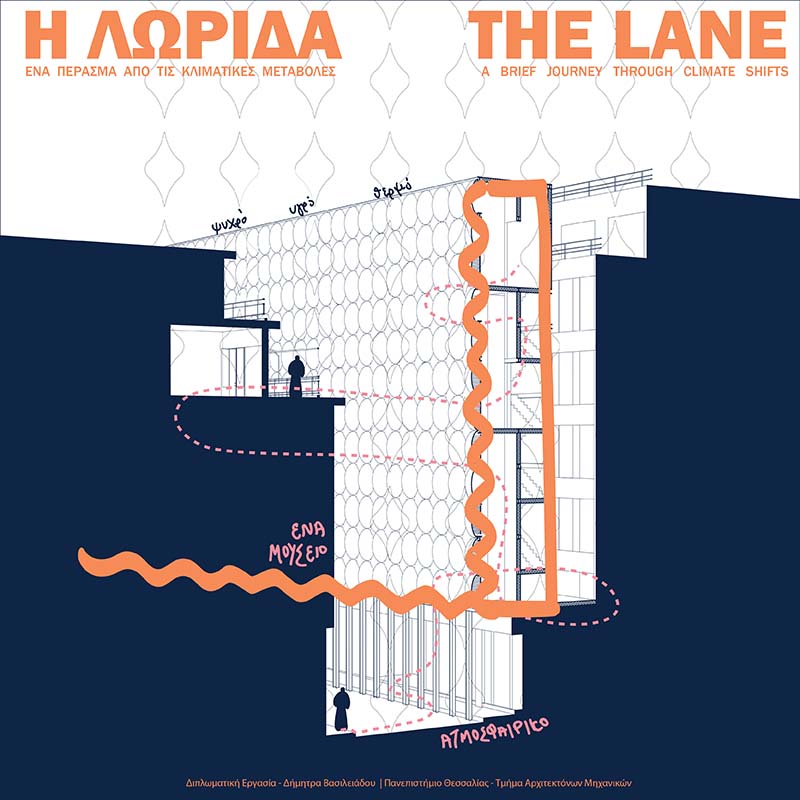

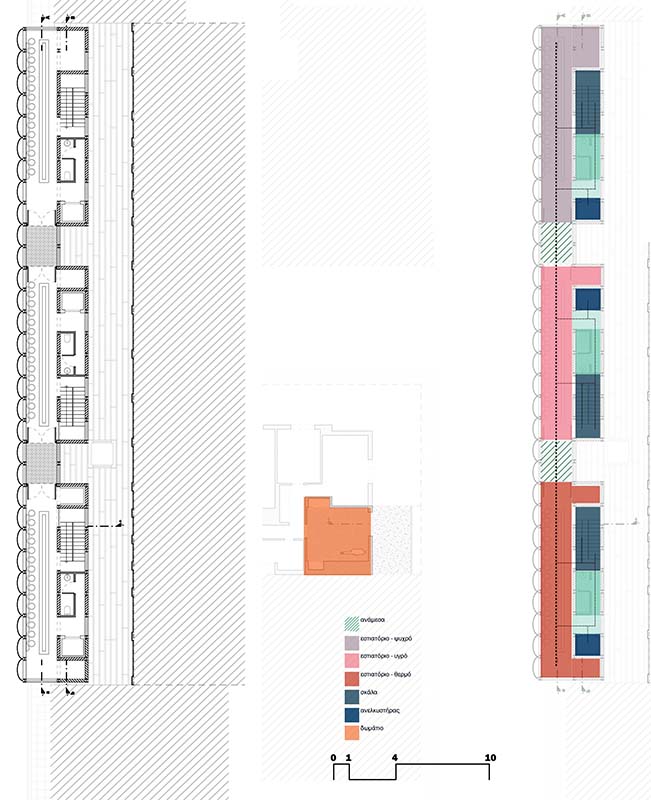

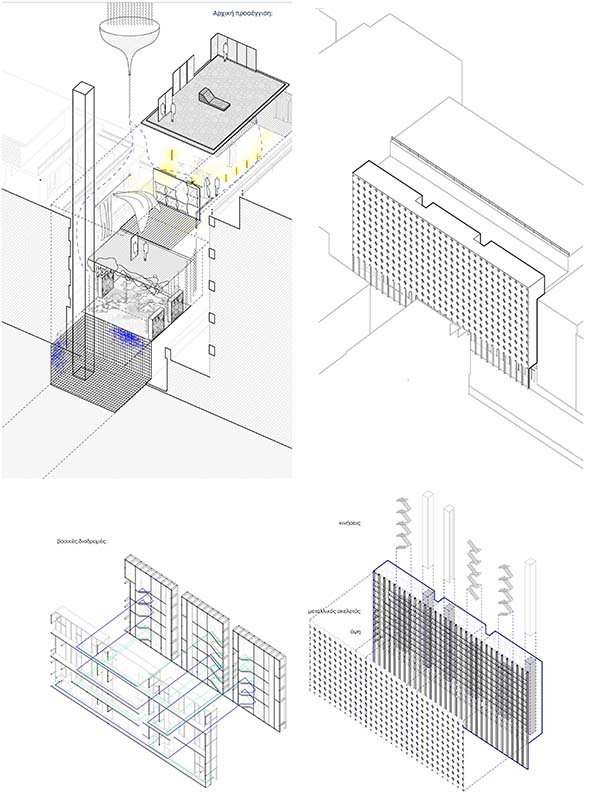

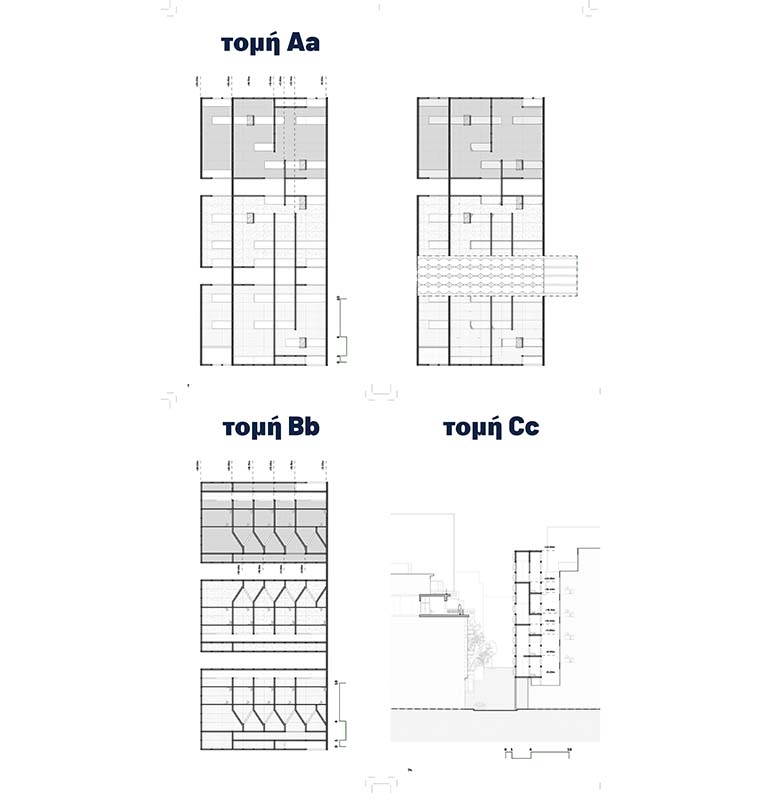

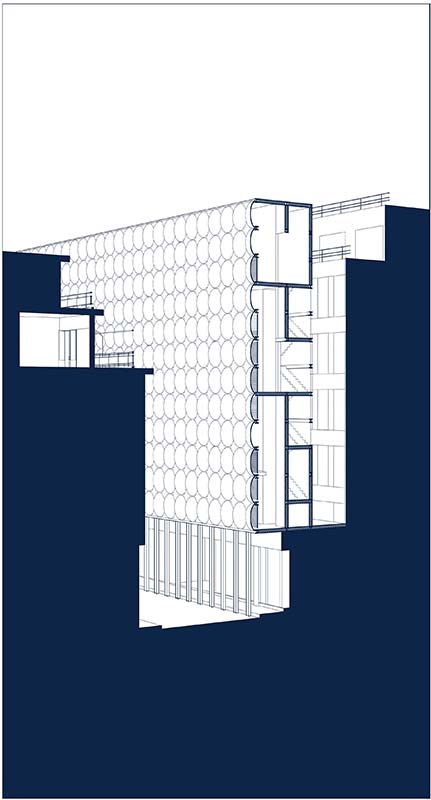

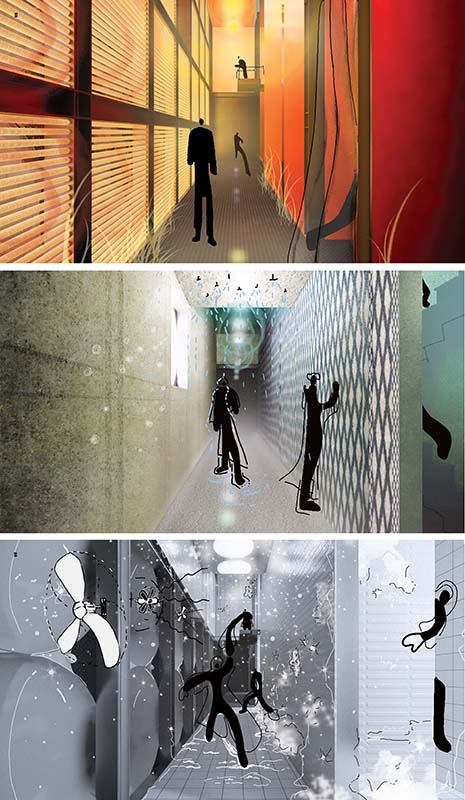

Tuesday, 5/09/2023, in the room:
The way I see the facade of the apartment building at 14 Vatopediou Street in Ambelokipi, Athens, is by looking out the window - thus, I behold its faithful copy. The building on which it is reflected, houses the ASEP (Supreme Council for Staff Selection). It doesn't look like a building but more like a two-dimensional facade made up of glass squares, a perfectly symmetrical image engraved on a canvas. Even the people moving inside it seem to lack three dimensions. Only when someone changes the position of the glass squares on the canvas does the possible existence of the third dimension become apparent.
Regarding the weather phenomena of September 2023, no one was prepared for the Daniel storm. Friends in Volos described how they were without electricity and water for days, and how the city was filled with mud, while here, Panormou Street seemed like a river, and metro stations flooded. Although the infrastructure was inadequate, climate change significantly worsened the situation. In this context, a solution was devised as an initial approach to the work, a solution that would help the situation by collecting water: the sponge as an absorption material placed as a coating on the existing facade.
Wednesday, 1/11/2023, 8:45 a.m., in front of my closet, before work:
One area where the impacts of climate change are strongly felt is our sartorial choices. The traditional boundaries between seasonal clothing have blurred as temperature fluctuations belie classical requirements.
The proposal that emerged from this line of thinking is the creation of a museum with multiple atmospheres that emphasizes how we experience climate changes, while ASEP operates as a base for installation and to supply it with electricity and water. The museum offers an experience of navigating through the rapid, abrupt, alternating weather changes, through three different successive atmospheric zones reflecting the basic aspects of climate changes: warm, humid, cold. Additionally, with the parabolic structure of the facade, inspired by a single-use ice pack, the effects of each climatic condition on water become perceptible. Before entering each zone, there is a preparation stop for the upcoming atmosphere by wearing appropriate equipment and clothing. The tour is completed with the self-service restaurant on the top level with a menu tailored to the climate of each zone. In the Lane, you experience and observe changes within a few meters.
In what ways does climate change manifest in your daily life?
Supervisor: Mitroulias Giorgos
Reference Number: 1049
How many pets can I find in just one walk in the woods? How long do these lifelong relationships last and what do I look at when I see a mushroom? A return to nature! A vicious cycle where everything starts where it ends. The organicity, ''eco-friendly'' constructions, a self-powered project and the solution that nature itself will provide for the design on a plot of land. The waves and rocks enter the city through Gaudi's designs and the Tokyo metro could have been designed better! I am telling a story of transformation. The story starts from the stimulus as I walk through the jungle and ends on a plot of land on the outskirts of Quito. An example of designing with nature and not just in nature. A symbiotic relationship and the result after this conversation. The look focuses on the textures and patterns present in nature, the structure and the way mushrooms grow on a fallen log at the edge of a path. How is this information translated, what is the pathway and how/to what extent does the imagination and subconscious influence? Can all these thoughts and pathways have their own corner in the realm of architecture or do they simply not belong here?
The design history of a creative space, from the initial stimulus to the location of a hammock, a building set consisting of an assemblage of forms imitating nature. A project that combines all the ecosystems of the Ecuadorian country, from the jungle to the 4,000-meter-high mountain. A green stop, on the busiest road to the centre of the capital or the country's largest airport.
"Information flows from the environment and there is feedback to the genome"
~ Lynn Margulis, Symbiotic Earth (2019)
Supervisor: Kotionis Zissis
Reference Number: 1073

